
OVERVIEW
THE R1 HIFI RACK; A MODULAR DESIGN.
ENGINEERED TO PROVIDE AN OPTIMISED PLATFORM FOR INSTALLATION OF HIGH PERFORMANCE ELECTRONICS & TURNTABLES.
Developed through extensive testing with the industries leading audio components, the R1 is the most advanced Hi-Fi rack ever developed. Design details across the R1, are indicative of the exceptional attention to detail and ‘total engineering’ approach to the products design. Each component working in harmony to create an energy management system that draws unwanted structural borne resonance away from sensitive audio components.
The striking monolithic R1 ‘vertical nodes’ are machined and finished in house, to a tolerance of 0.02mm. Each level in the R1 rack consists of two vertical nodes, which is assembled from six high mass blocks of polyoxymethylene (POM). The material has been selected for its hardness and machinability, much like aluminium, with the advantage that it is exceptionally well damped.
The R1 vertical nodes are cross-linked by elegant carbon fibre ‘Isobars’ which form the support for the marine ply shelves. 14mm steel bars, tied at the ends with precision machined sockets run through the centre of the Isobars, compressing them under tons of pressure along their length. This improves the energy transmission pathway along the carbon fibre tube, creating a pathway between the sensitive audio components and the nodes that draw unwanted energy, which would otherwise manifest as resonance in the audio components, away and into the nodes that absorbs and dissipates the energy.
Elegant examples of these highly optimised energy pathways can be seen across the R1 design.
At the interface between the carbon fibre Isobar and the multi-material composite shelves, Wilson Benesch have designed fluted cups that are precision machined to create two points which meet with the carbon fibre.
Each R1 rack interfaces with the next by four additively manufactured C16 decouplers that locate with four sockets on the adjoining R1 rack. The interface creates an assured feel to the whole design; there is a palpable feeling of precision when placing each R1 rack onto the next. But the nodes are a functional design element, the nodes legislate that tons of pressure is focussed through the four nodes.
Modular in design, adjustable in setup, the R1 is fitted with four spikes taken directly from the same shelf as the Eminence loudspeaker. Four ball bearing tipped spikes kinematically located into four floor cups holding captive three ball bearings to create the final energy node.
The R1; Total engineering.
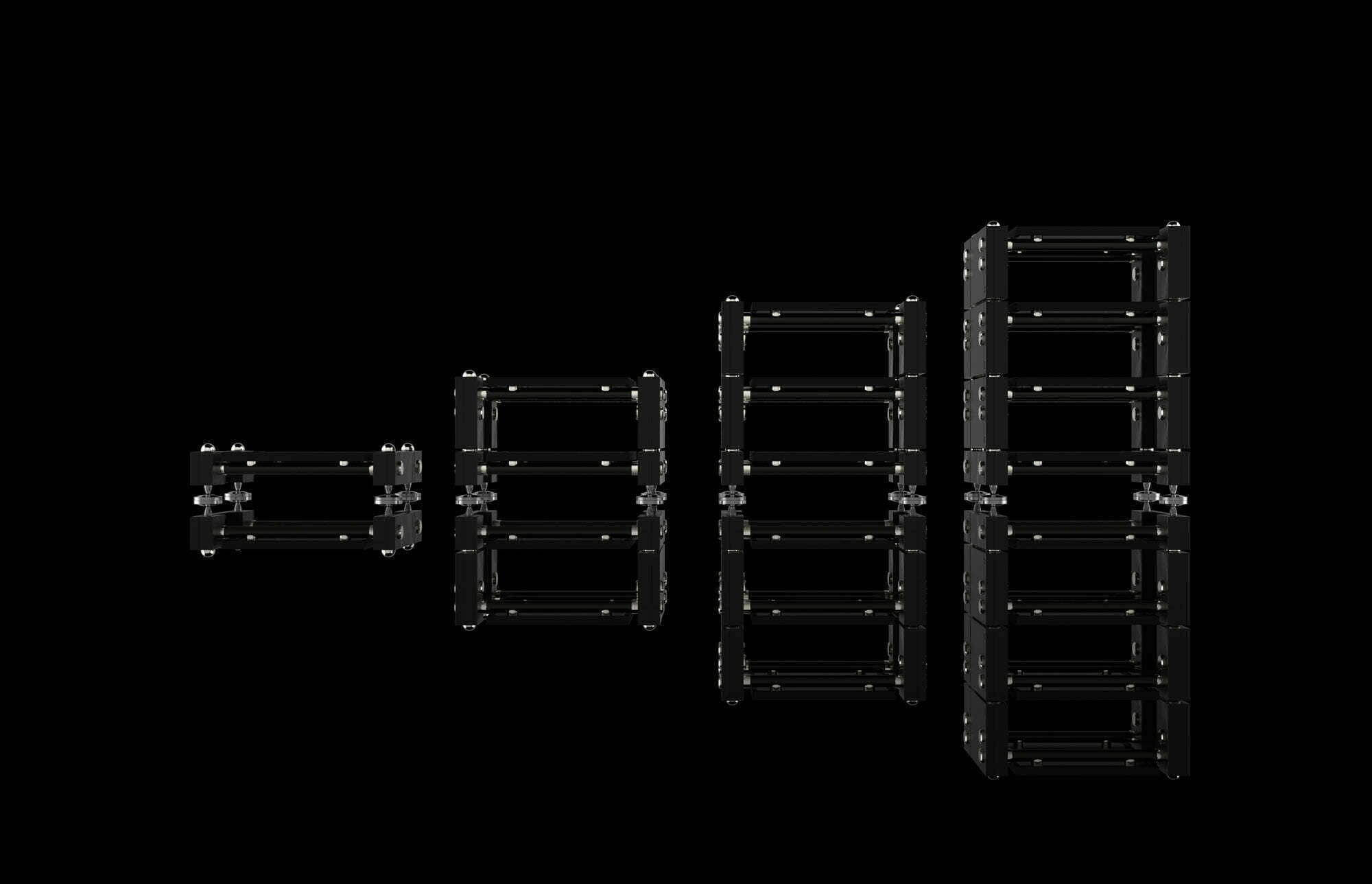
DESIGN
CHROME FINISHING BALLS
Extending the principles of kinematic location, Wilson Benesch developed a ball and socket joint for the interface between each R1 level. Four 500g chrome steel spheres couple and locate kinematically with four sockets on the adjoining R1 level to restrict all six degrees of mechanical freedom. Each R1 level is therefore a single damping element in itself, consisting of advanced engineering materials and highly engineered components.
C16 NODES
Extending the principles of kinematic location, Wilson Benesch developed a ball and socket joint for the interface between each R1 level. Four 500g chrome steel spheres couple and locate kinematically with four sockets on the adjoining R1 level to restrict all six degrees of mechanical freedom. Each R1 level is therefore a single damping element in itself, consisting of advanced engineering materials and highly engineered components.
COMPOSITE SHELF
The R1 HIFI Rack shelving is the first point that interfaces with the sensitive audiophile electronics that are placed upon it. The shelf therefore plays a crucial role, it must simultaneously provide a stiff, level surface, whilst at the same time absorbing resonant energy emitted from the chassis of the electronics. To achieve this the R1 Shelf is comprised of multiple materials in a composite structure. The stiff materials provide the ridged, flat surface, whilst the additional materials that are added into the core of the shelf provide energy damping. Electronics generally contain transformers which create resonant energy within the chassis of the electronics. The R1 Shelf is therefore designed to absorb and eliminate this energy as heat.
FLUTED SHELF CUPS
The beautifully machined form of the shelf cups are a direct output of their function. At the tips of the cup the form takes on the shape of the carbon fibre tube to create a perfect interface between each structure. This not only provides robust stability, but also focuses the contact point to a small surface area. Again the critical concern with the design is to focus energy flow through a tiny point to optimise and manage the flow. This also aligns the force entering the bar, each at 60 degrees from vertical, or 120 degrees diametrically opposed from each other.
CARBON ISOBAR
In each R1 tier, two multi-axial carbon fibre tubes act as cross members between the uprights to form the fundamental structural elements. Since these cross members have principle responsibility for supporting the high-end audio components, their role is critical in dictating the flow of energy from each audio component into the surroundings and into each other, as well as from the surroundings to each audio component. If an ideal material solution for this component was to theorised, an engineer would specify a material that exhibits high stiffness, high strength and, perhaps most fundamentally, a material with a high damping coefficent. The phenomenal stiffness, strength and damping characteristics of carbon fibre are well documented. Moreover, the following remarkable calculation attests to the suitability of this element for the R1 design in terms of carbon fibre's load bearing capacity: With a total mass of 200g, each carbon fibre tube used in the R1 rack is capable of withstanding a theoretical axial load of 5 tons. This equates to 25000 times its own mass. To put this in perspective, this is the equivalent of a 13-stone (182lbs) human being able to support a load of 2300 tons!
STEEL TENSIONING BAR
Wilson Benesch have applied the principle of mutual self-damping within designs for many years. The concept of using multiple materials with different damping characteristics in one composite structure allows each material to absorb and damp the natural resonant frequency of another material in the system. Pushing this concept further, Wilson Benesch have sought to elevate the natural resonant frequencies of structures wherever possible, since a structure with a high resonant frequency is more easily damped. The Wilson Benesch R1 Hi-Fi Rack employs both of these principles within its design. The addition of a 14mm steel bar at the centre of each cross-member clamps the carbon fibre tube. This damps the very high resonant frequency of the carbon fibre cross-member. In turn the tube terminates at precision-machined bright nickel-coated steel cups that are secured to the high-grade POM rack by M14 nuts. The result is a phenomenally stiff structure constructed from several materials that mutually self-damp other another. This ensures that any structural borne resonance within the R1 structure is not transferred to the high-end components residing upon the system.
POLYOXYMETHYLENE UPRIGHTS
Precision machined in-house, each upright of the R1 rack is assembled from multiple sections of polyoxymethylene (POM), a dense, high-performance engineering polymer. POM has a regular crystalline structure that results in a material hardness equivalent to aluminium. This property permits the high precision machining required to achieve the exacting architecture of the R1 upright. However, unlike aluminium which exhibits poor damping characteristics, POM has an inherently high damping coefficient. In addition to a relatively low mass, these material properties make POM a superior material in the construction of the R1. Wilson Benesch mastered the engineering of POM during the development of the Circle 25 Turntable. In this application, POM formed the two plinths of the Circle 25, forming a structure with high stiffness, mass and excellent damping characteristics to significantly improve the performance of the Circle 25 Turntable.
KINEMATIC TERMINATIONS
BESPOKE
ENGINEERED FOR YOU
Every Wilson Benesch is hand built for you. We offer a range of bespoke natural wood veneers, P1 colored carbon and automotive pearl and metallic paint finishes. Want to create something unique, contact us to create your own Eminence.
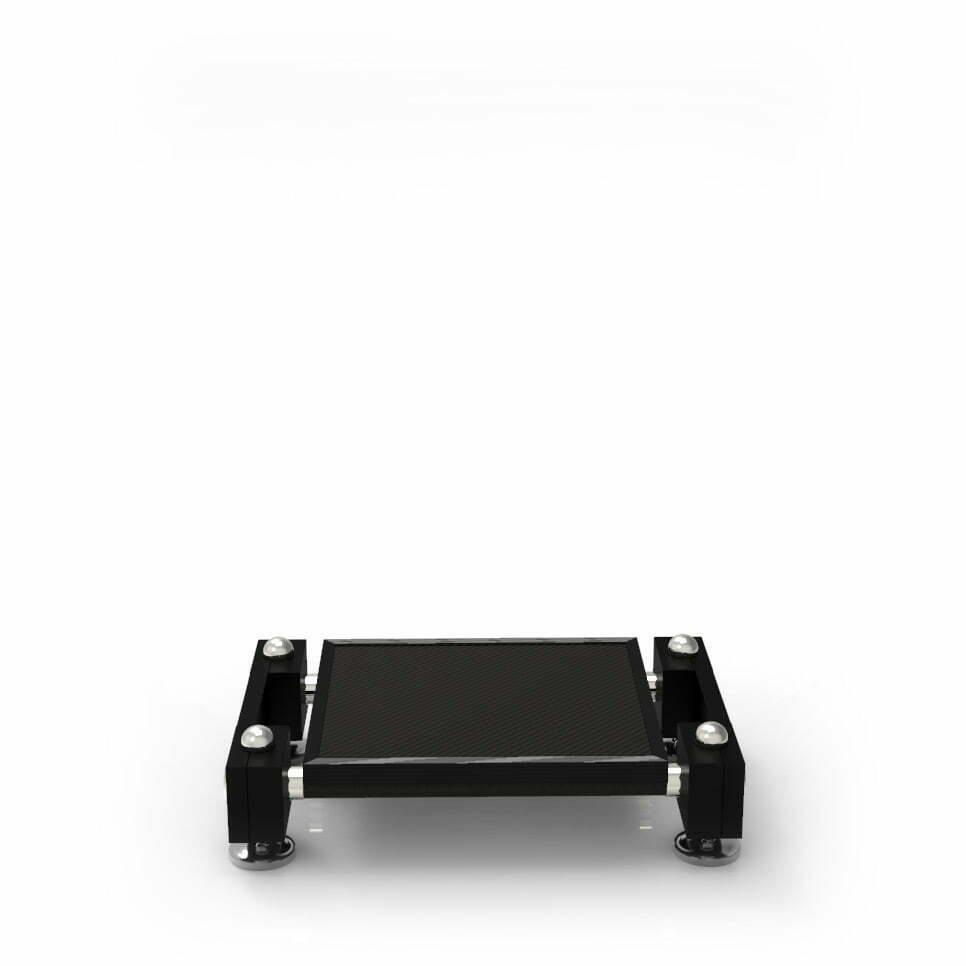
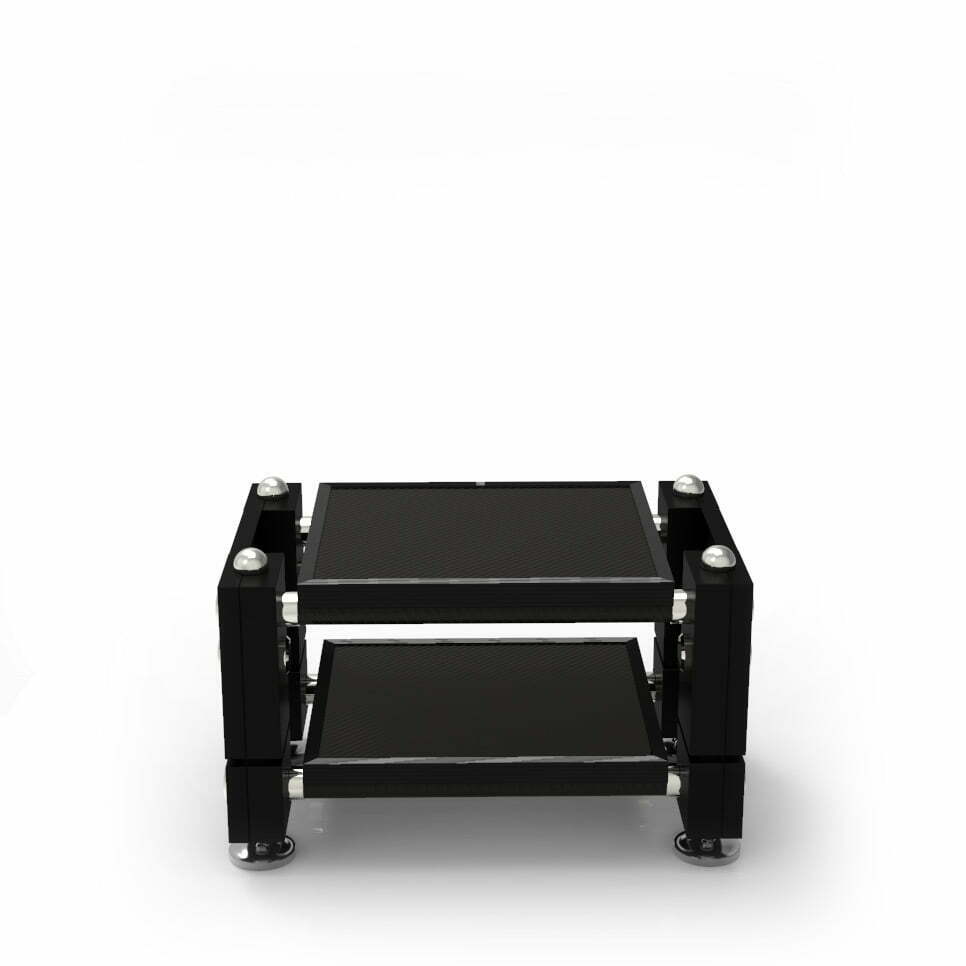
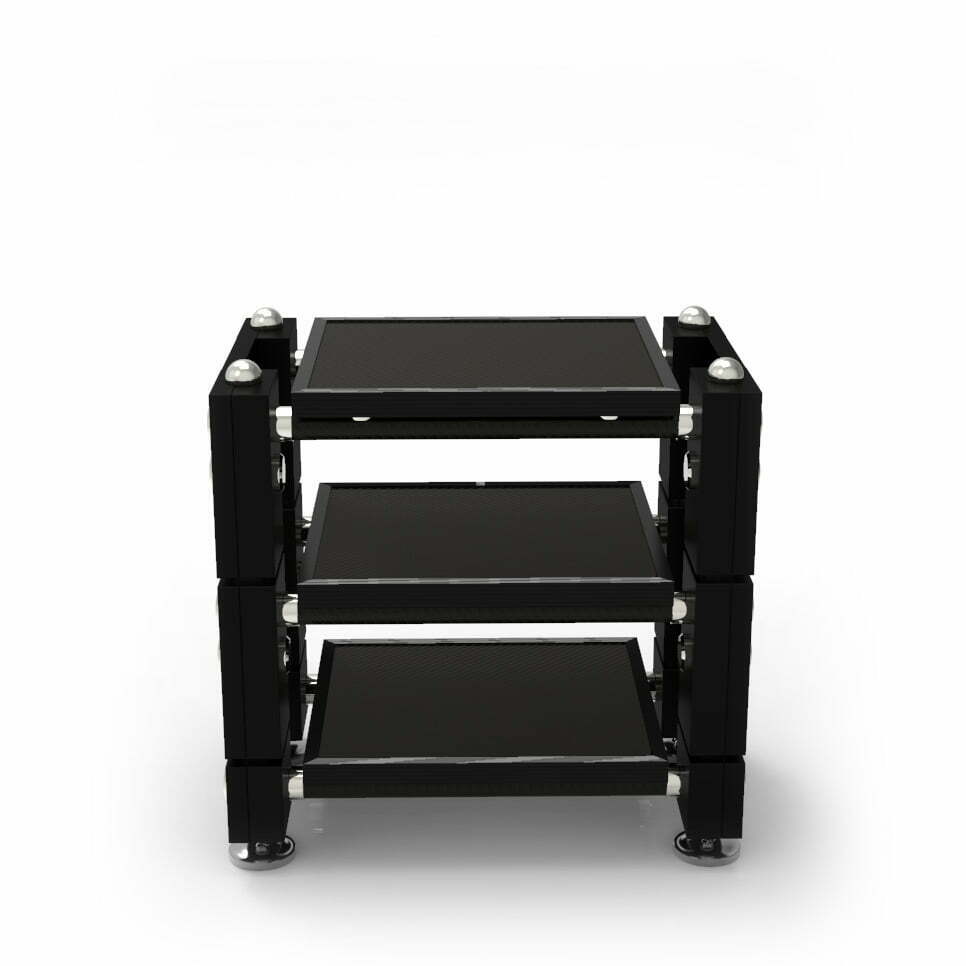
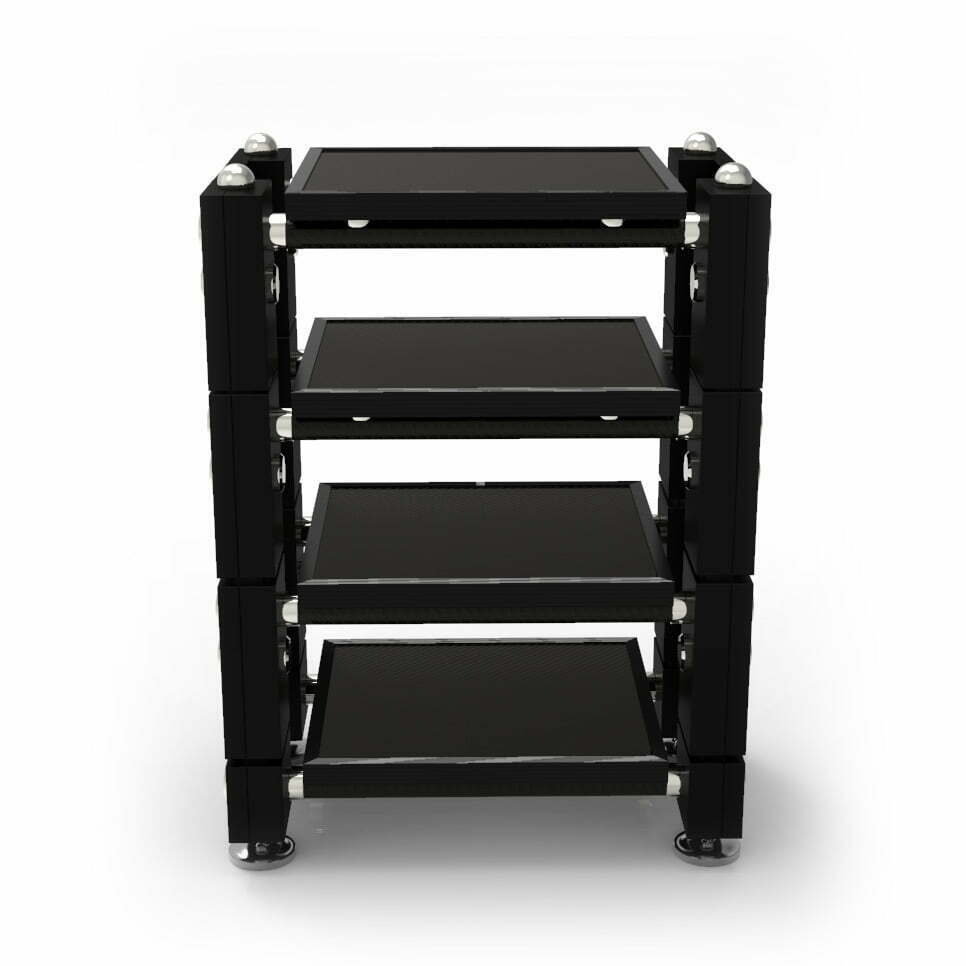
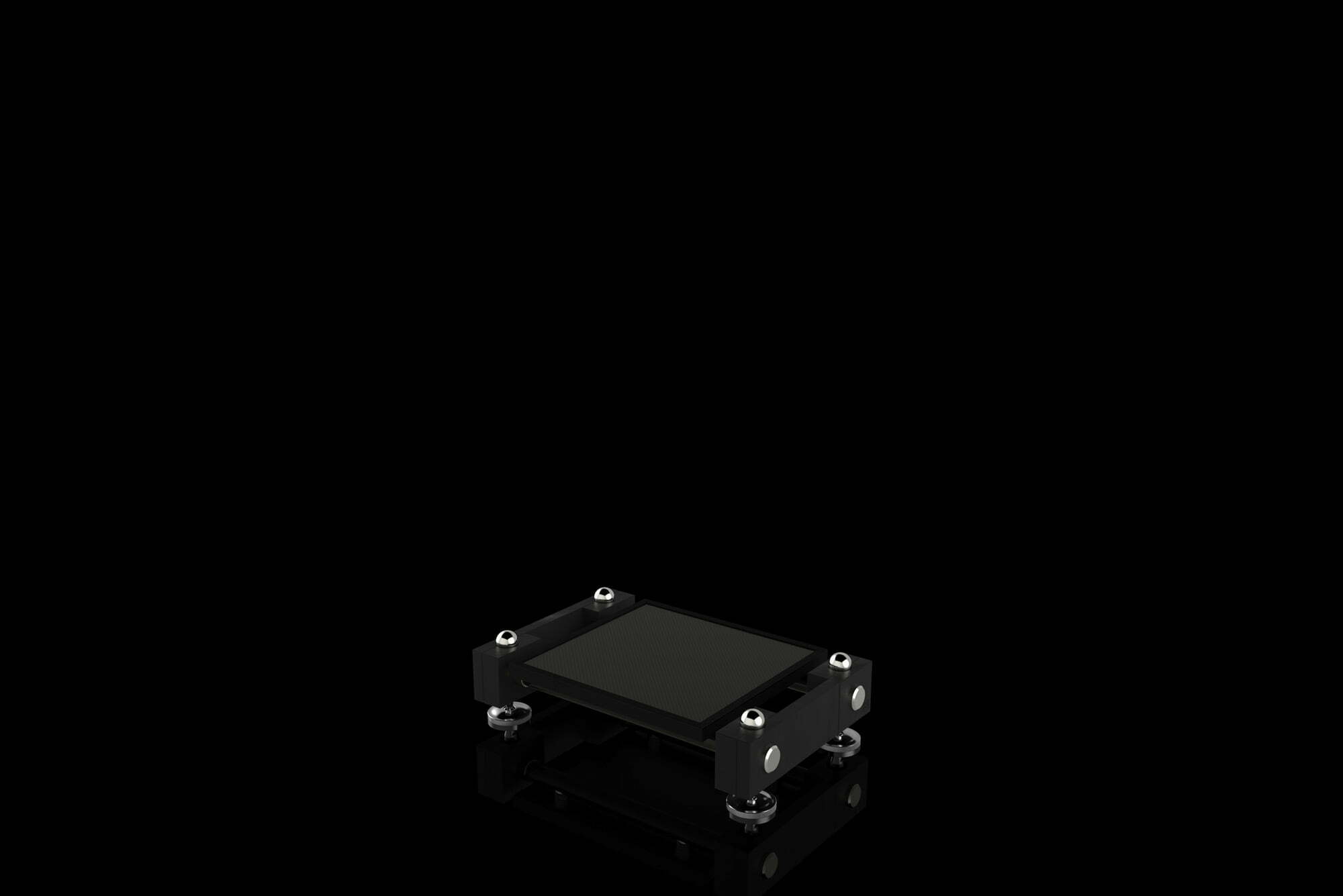
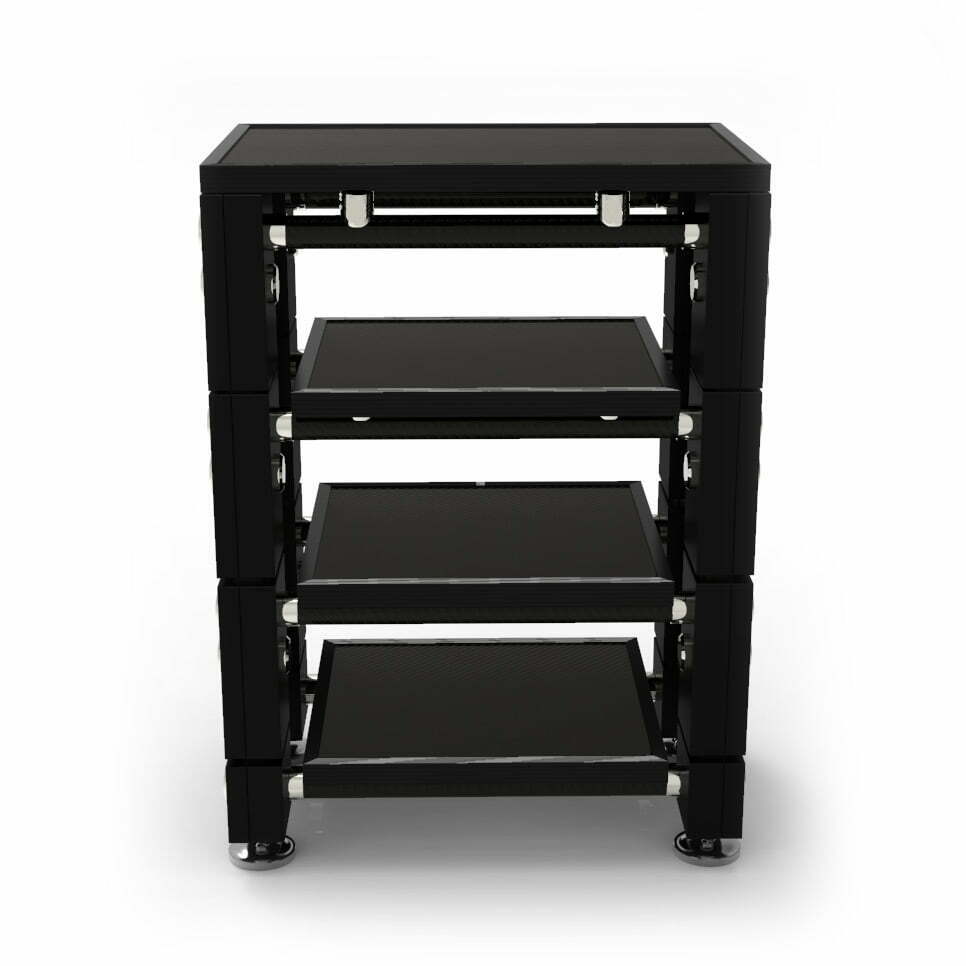
CRITICAL ACCLAIM
music's dynamic expression...
the eminence is simply
unequalled.
Hearing music’s transient nature reproduced accurately is startling, and drives home the fact that all other dynamic loudspeakers act like a dynamic filter between you and the music.
Moreover, the way the Eminence resolves pitch, texture, and transient information in the bottom end is nothing short of revelatory.”
- Robert Harley, The Absolute Sound, Issue #294






SPECIFICATIONS
| DRIVE TECHNOLOGY | Low Bass | 170mm(7") Wilson Benesch Tactic 3.0 |
| Low Bass 2 | 170mm(7") Wilson Benesch Tactic 3.0 | |
| Tweeter | 25mm (1”) Wilson Benesch Fibonacci Hybrid Silk-Carbon Tweeter | |
| Midrange | 170mm (7”) Wilson Benesch Tactic 3.0 | |
| Isobaric Drive System 1 | 2x 170mm (7”) Wilson Benesch Tactic in Clamshell Formation | |
| Isobaric Drive System 2 | 2x 170mm (7”) Wilson Benesch Tactic in Clamshell Formation | |
| Isobaric Drive System 3 | 2x 170mm (7”) Wilson Benesch Tactic in Clamshell Formation | |
| CROSSOVER TECHNOLOGY | Low Bass | First-Order, 300Hz Low Pass Filter |
| Tweeter | Second-Order, 5kHz High Pass Filter | |
| Midrange | First-Order, 5kHz Low Pass Filter | |
| Midrange | Acoustically Optimised Enclosure 500Hz Roll-off | |
| Isobaric Drive System 1-3 | First-Order 500Hz Low Pass Filter | |
| ENCLOSURE TECHNOLOGY | Materials | Poly-Alloy, Advanced Biocomposite, Hybridised Construction |
| Upper Enclosure | Carbon Fibre - Biocomposite A.C.T. 3Zero Monocoque | |
| Upper Enclosure | Sealed Enclosure | |
| Tweeter Enclosure | Carbon Fibre - Biocomposite A.C.T. 3Zero Monocoque | |
| Tweeter Enclosure | Sealed Enclosure | |
| Isobaric Enclosure | Carbon Fibre - Biocomposite A.C.T. 3Zero Monocoque | |
| Isobaric Enclosure | Sealed Enclosure | |
| MEASUREMENTS | Type | 2.5-way |
| Impedance | 4.5 Ohms Nominal | |
| Sensitivity | 89dB @ 1-Meter on axis, 2.83V Input | |
| Frequency Response | 24Hz - 30kHz +/- 2dB | |
| DIMENSIONS | Height | 1990mm (78”) |
| Width | 280mm (11”) Baffle, 320mm (X”) Widest Point Foot | |
| Depth | 680mm (27”) | |
| Weight | 145kg (320lbs) Single Enclosure |
KEY SPECIFICATIONS

FREQUENCY RESPONSE

SENSITIVITY

WEIGHT

HEIGHT
DOWNLOADS
Features & Options Guide
DOWNLOAD
Technical Specifications
DOWNLOAD
